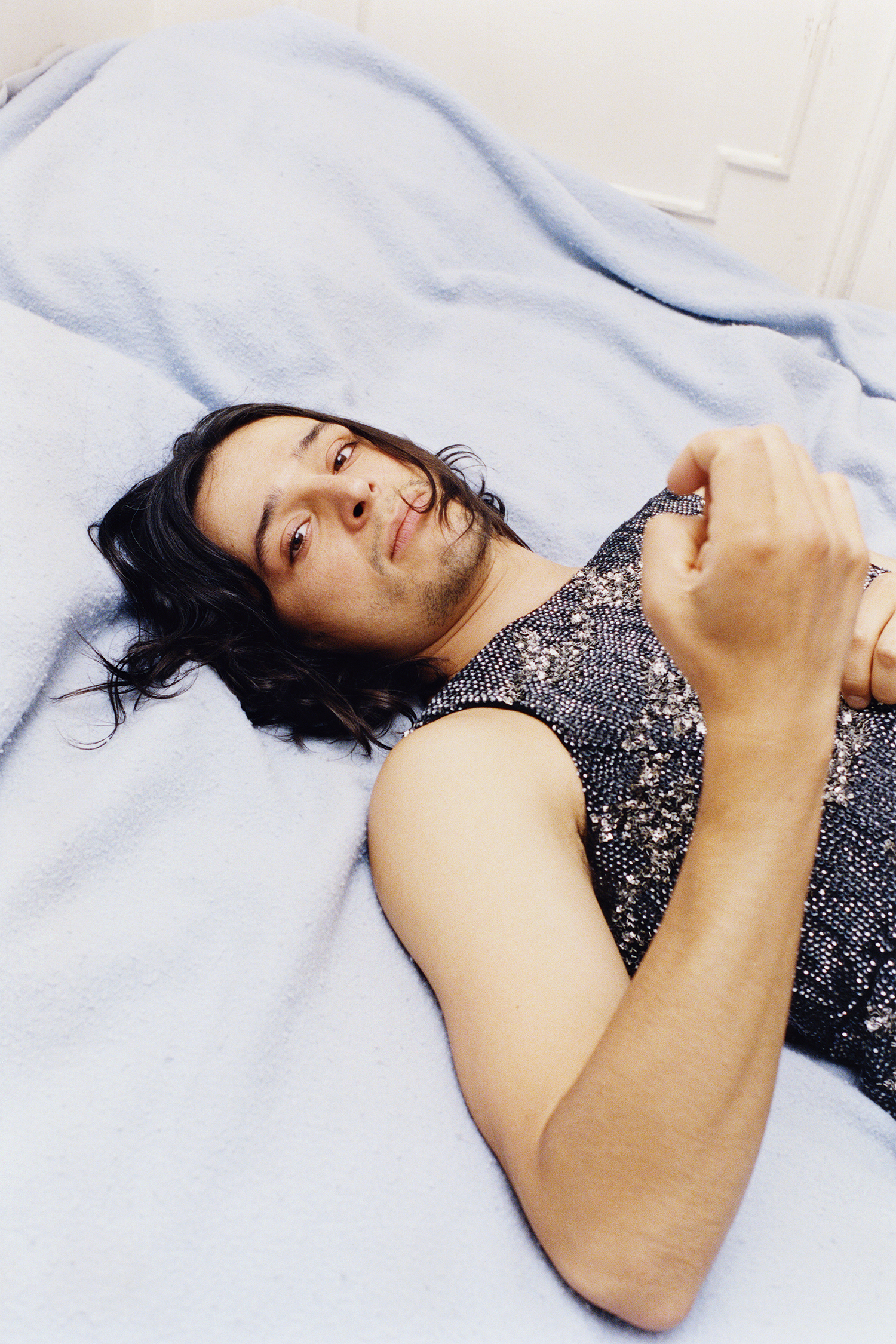Purple Magazine
— F/W 2013 issue 20
Olivier Theyskens
 Olivier wears an embroidered silk dress THEYSKENS’ THEORY
Olivier wears an embroidered silk dress THEYSKENS’ THEORY
on un-designing
interview by OLIVIER ZAHM
portrait by COLIN DODGSON
OLIVIER ZAHM — How do you see fashion evolving these days? Because you come from the ’90s, which was a period of creativity, and you started with no money. I read that you started with your grandmother’s sheets.
OLIVIER THEYSKENS — Yeah. My grandparents had a farm in Normandy. They were farmers and they had a lot of these old linen sheets and towels and stuff. My grandmother collected so many things for me, pieces of Chantilly lace and all kinds of embroidery. She would also collect very old journals for me, from like 1860 to 1930, all these illustrated journaux de mode. I would look at them all the time when I was there. Every time she saw an antique that looked like what was in…